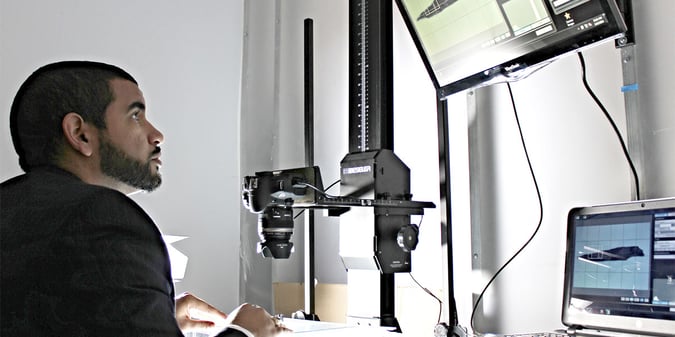
Last week we introduced the topic of 3D digitization in museums. The post investigated 3D digitization adoption and explored one of the two main methods: photogrammetry. This post will evaluate the second method—LIDAR scanning—and will conclude with recommendations for museums to consider when choosing a 3D digitization method.
LIDAR (Laser Imaging Detection And Ranging) Scanning has a reputation as being the most accurate form of 3D digitization because the laser measures the exact distance between the laser and the point being imaged. In just a few seconds, millions of points of data are gathered and can be immediately viewed after scanning is performed. The files produced by LIDAR scanning are typically converted to CAD (Computer Aided Design or Drafting) to inform cultural heritage site or structure restoration work. If a cultural heritage site needs to be digitally surveyed, LIDAR is the fastest, most accurate, and efficient way to do it.
LIDAR Example: The Science Museum in London's Shipping Gallery where more than 2 billion precisely measured points were used to recreate a now defunct exhibit.
Benefits of LIDAR:
- Can capture an incredible amount of information within seconds.
- Is very accurate, rendering precise measurements that can be used for engineering purposes.
- Can provide better 3D scans in a variety of environments.
- Doesn’t require as much human labor, nor rely on human accuracy during the imaging process.
Drawbacks of LIDAR:
- Can be cost prohibitive to acquire scanners.
- Will take moderate to extensive training for mastering the equipment, capturing, processing, and software.
- It’s likely the most expensive option, with handheld scanners starting in the hundred-dollar range and stand-alone scanners quickly ramping up to $100,000.
- Software for processing LIDAR scans are numerous and expensive. This article: “3D Scanning: Understanding the Differences In LIDAR, Photogrammetry and Infrared Techniques” highlights the variety of hardware and software needed for LIDAR scanning, as well as photogrammetry and infrared technologies.
Photogrammetry and LIDAR scanning are both achievable in a museum setting, though it’s likely the museum will have to commit to one due to restrictions on cost and space. In addition to equipment cost and setup, training and software are elements that need to be evaluated when selecting a 3D digitization method for museum use.
3 Decision Points
In addition to analyzing these elements, there are three questions to consider when deciding what type of 3D digitization to employ within the museum:
- What is the ultimate purpose (and use) for 3D digitization?
- What technology best fits the museum’s existing budget and setup?
- Where will the 3D digital objects be published?
What is the ultimate purpose (and use) for 3D digitization?
In most cases, 3D digitization for museums can be satisfactorily performed by either method. However, there are applications where having a mathematically accurate scan necessitates a 100% accurate digitization method, such as the one LIDAR offers. If the 3D scan is to inform engineering restoration of a structure, having 100% accurate digital measurements is a necessity. If the 3D scan is meant to provide accurate textural presentation to inform research or preservation methods, a rendering from photogrammetry will likely be more informative. If the ultimate purpose for digitization is to be shared and enjoyed, either 3D digitization method is suitable.
What technology best fits the museum’s existing budget and setup?
Most museums already have a digitization system in place and will want to consider how best to integrate 3D digitization technology into the current setup. Depending on the 3D digitization method, there are various price points to consider if a budget request or grant application are being used to acquire the technology. As photogrammetry uses commonly available cameras and lighting, it’s usually more affordable than acquiring LIDAR scanners and software.
Where will the 3D digital objects be published?
Not all museum catalog software can ingest and display 3D digital images. It’s worth consulting with your collections management software representatives to see if the current museum software can accommodate 3D digital images. If the catalog software cannot accommodate 3D digital images, the museum will need to consider a different publishing platform to integrate with their website. Lucidea’s Argus platform can store any electronic file, including 3D image files. When a user retrieves a 3D object associated with a catalog record, a complimentary program is launched to facilitate viewing.
Conclusion
If your museum is waiting for the right moment to invest in 3D digitization technology, the time is now. The technology has had two decades to evolve and price points are becoming reasonable for museums on a budget. Experiment with the technology, determine the main use cases for 3D digital output, and figure out how the technology can integrate with existing digitization and collections management software. Once you’ve done that, whatever technology the museum chooses to invest in will be the right one.


